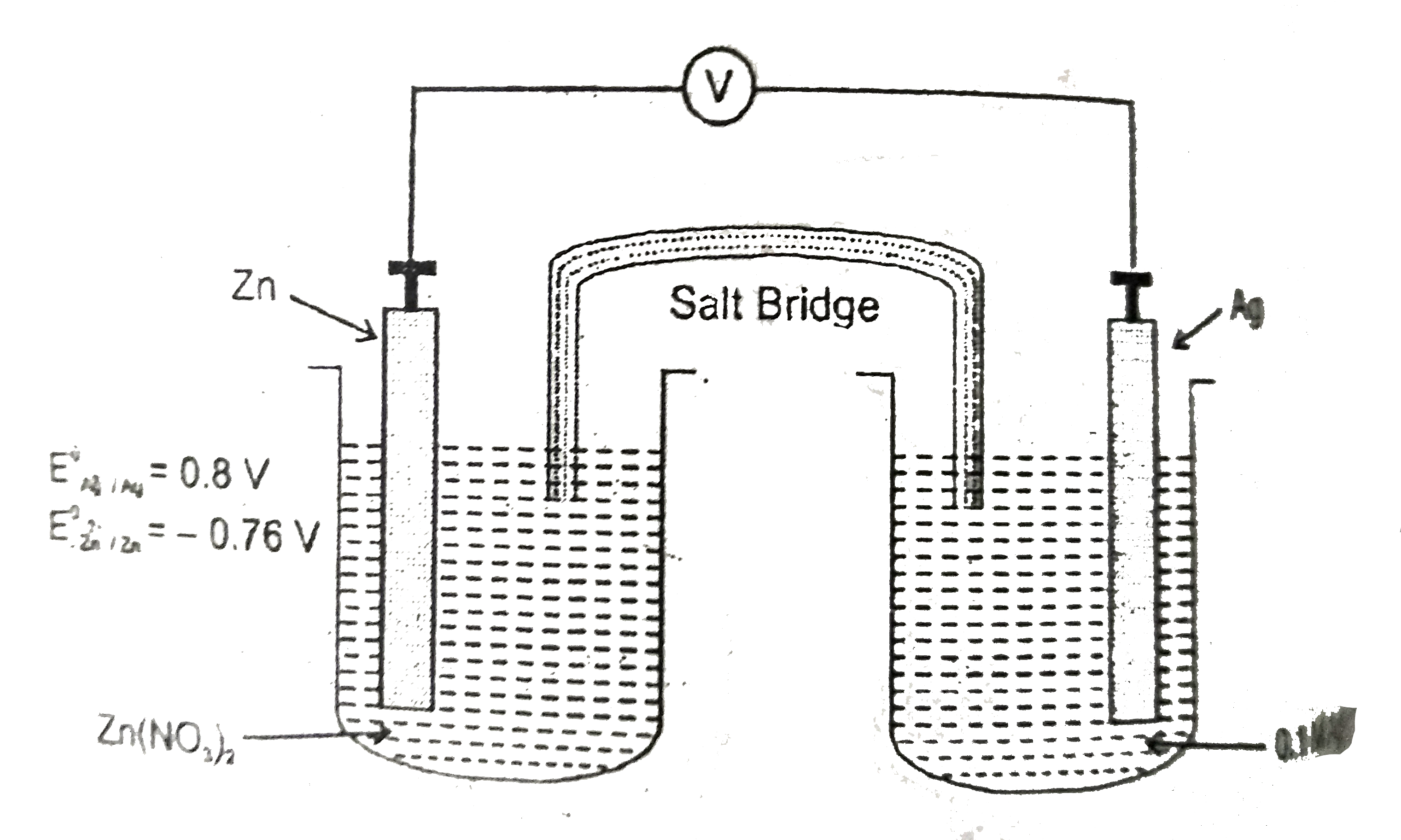The cell reaction as written is spontaneous if the cell potential is:
Positive
Negative
Zero
Infinite
The correct Answer is:A
To determine if a cell reaction is spontaneous, we can analyze the relationship between the cell potential (E_cell) and the Gibbs free energy change (ΔG). Here’s a step-by-step solution:
Step 1: Understand the relationship between ΔG and E_cell
The Gibbs free energy change (ΔG) for a reaction is related to the cell potential (E_cell) by the equation:
ΔG=−nFEcell
where:
- ΔG = Gibbs free energy change
- n = number of moles of electrons transferred in the reaction
- F = Faraday's constant (approximately 96485 C/mol)
- E_cell = cell potential
Step 2: Determine the condition for spontaneity
A reaction is spontaneous if the change in Gibbs free energy (ΔG) is negative:
ΔG<0
From the equation, if E_cell is positive, then ΔG will be negative, indicating that the reaction is spontaneous.
Step 3: Analyze the implications of E_cell
If E_cell is:
- Positive: ΔG will be negative (spontaneous reaction).
- Zero: ΔG will be zero (reaction is at equilibrium, not spontaneous).
- Negative: ΔG will be positive (non-spontaneous reaction).
Step 4: Conclusion
For the cell reaction to be spontaneous, the cell potential (E_cell) must be positive.
Thus, the correct answer is that the cell reaction is spontaneous if the cell potential is positive.
The Gibbs free energy change (ΔG) for a reaction is related to the cell potential (E_cell) by the equation:
ΔG=−nFEcell
where:
- ΔG = Gibbs free energy change
- n = number of moles of electrons transferred in the reaction
- F = Faraday's constant (approximately 96485 C/mol)
- E_cell = cell potential
A reaction is spontaneous if the change in Gibbs free energy (ΔG) is negative:
ΔG<0
From the equation, if E_cell is positive, then ΔG will be negative, indicating that the reaction is spontaneous.
If E_cell is:
- Positive: ΔG will be negative (spontaneous reaction).
- Zero: ΔG will be zero (reaction is at equilibrium, not spontaneous).
- Negative: ΔG will be positive (non-spontaneous reaction).
For the cell reaction to be spontaneous, the cell potential (E_cell) must be positive.
Similar Questions
Knowledge Check
Select the correct alternative from the choices given :
The cell reaction is spontaneous or feasible when e.m.f. of the cell is :AnegativeBpositiveCzeroDeither positive or negativeCell reactiomn is spontaneous when
AE∘red is negativeBΔG∘ is negativeCE∘oxide is positiveDΔG∘ is positiveAssertion :EMF of the cell is the potential difference between the electrode potentials of the cathode and anode when no current is drawn through the cell.
Reason: Anode is kept on the right side and cathode on the left side while representing the galvanic cell.AIf both assertion and reason are true and reason is the correct explanation of assertion .BIf both assertion and reason are true but reason is not the correct explanation of assertion .CIf assertion is true but reason is false .DIf both assertion and reason are false .
If a cell reaction is spontaneous, then :
View SolutionCell reactiomn is spontaneous when
View SolutionWrite the cell reaction and cell notation for the Daniell cell. How can its life be increased ?
View Solution
Consider the following electrochemical cell.
(a). Write a balanced net ionic equation for the spontaneous reaction that take place in the cell.
(b). Calculate the standard cell potential E0 for the cell reaction.
(c). If the cell emf is 1.6V what is the concentration of Zn2+?
(d). How will the cell potential be affected if Kl is added to Ag+ half-cell?
View SolutionFor a cell to work spontaneously which of the following options should be correct?
View Solution